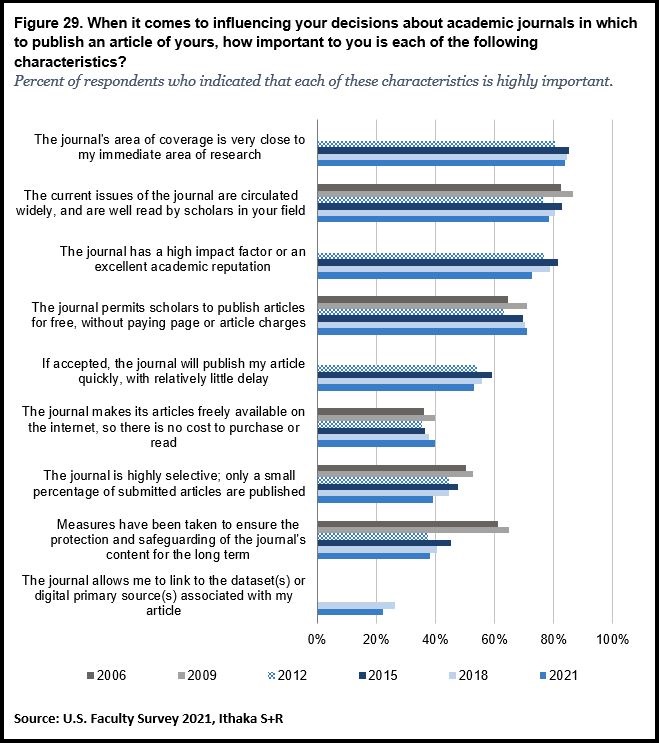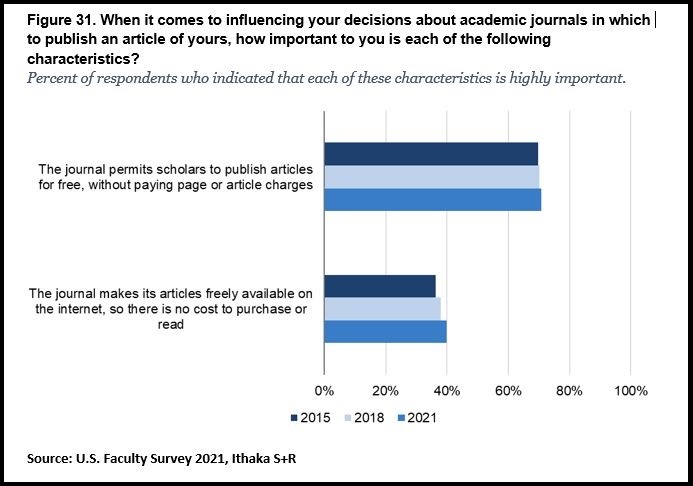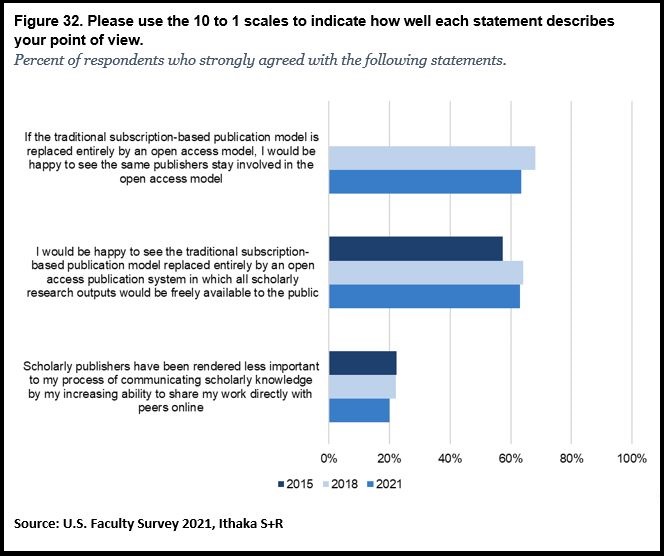Open access model embraced by more next generation faculty in U.S. higher education, triennial survey says
Interest in open access is on the rise for American higher education faculty aged 22 to 44, while the journal’s Impact Factor continues to diminish in importance for most faculty, according to results announced today from Ithaka S+R’s U.S. Faculty Survey 2021, aided by sponsorship from academic publisher Taylor & Francis.
“Taylor & Francis is very excited to collaborate with Ithaka S+R as a corporate sponsor for its premier triennial U.S. Faculty Survey,” said Todd Hummel, Global Publishing Director, Earth, Life, and Medical Science, Taylor & Francis. “As a trusted partner to knowledge makers throughout their career, supporting this comprehensive, leading-edge analysis aligns with our mission and provides further insights about attitudes, behaviors, preferences, and practices in the scholarly community to help us continually serve the needs of our customers.”
Roger Schonfeld, Vice President of Organizational Strategy and Libraries, Scholarly Communication, and Museums, Ithaka S+R, said: “We are grateful for Taylor & Francis’s sponsorship of the US Faculty Survey 2021. Their support helps us provide strategic intelligence to the library community about the evolving research and teaching practices of one of their core constituencies.”
From its books and journals business to researcher services to commercial and marketing engagement, Taylor & Francis relies on robust, evidence-based data about scholars and the academic ecosystem to maintain leadership in the academic publishing industry, along with continued longstanding efforts to advance open access.
Ithaka S+R conducted its most recent U.S. Faculty Survey in late 2021, yielding results from nearly 8,000 respondents regarding evolving practices in research, teaching and publishing for academics at primarily four-year universities and colleges across the United States. Of those surveyed, 45% were professors, followed by associate professors, assistant professors, adjunct professors, lecturers, and instructors in the Humanities, Social Sciences, Sciences, Medical, and Area Studies disciplines.
Seventy percent of faculty aged 22 to 44 said they would like the traditional, subscription-based, publication model shifted to an open access model compared with 63 percent of faculty in the 44 to 54 age group and 57 percent of faculty in the 65 and older age group, the survey says. Mostly faculty in the social sciences and sciences have this sentiment, compared to peers in other academic disciplines, the survey states.
According to the survey, “faculty members continue to be interested in an open access publication model and see their library as key in financially supporting open access infrastructure.” The survey results indicate that half of faculty members are open to their university library financing open journal platforms, while one-third of respondents say that research funders should include open access fees in their grants or that the university should directly pay publishers.
Regarding high Impact Factor, 73 percent of faculty rated it as very important in 2021, compared to 79 percent in 2018, and 81 percent in 2015, with primarily scientists and medical faculty influencing the decrease, according to survey results. However, the survey asserts that in all disciplines, there’s been a decrease in the importance of a journal’s Impact Factor for faculty “when deciding where to publish their scholarly research.”
Additional key findings from the U.S. Faculty Survey 2021 conducted by Ithaka S+R include: the role of the library and its various functions; research integrity and guarding against research fraud; creation and use of open educational resources (OER); the monograph’s status; and the value of scholarly conferences and workshops.
Some survey highlights
For the full results, please visit the Ithaka S+R report


